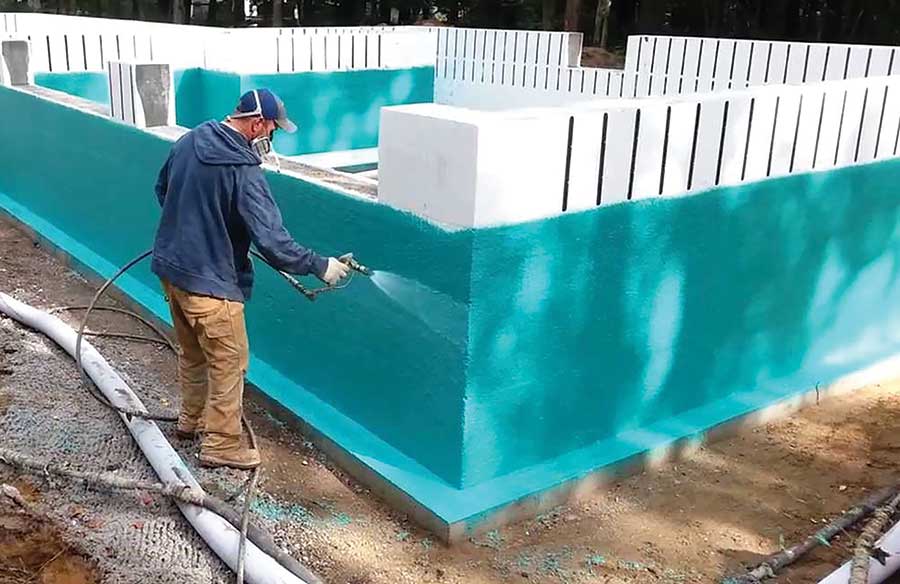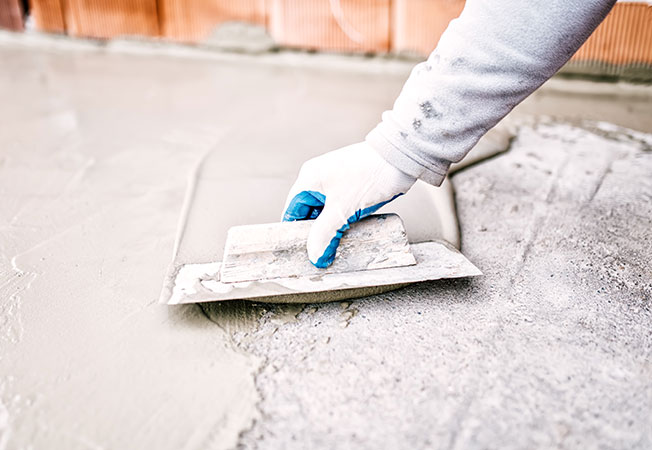How Yard drainage Omaha Reduces Flood Risk Instantly
Types of Waterproofing: Checking Out the Different Approaches and Their Applications
Waterproofing is an essential aspect of building and construction and maintenance. It safeguards structures from the damaging impacts of water damages. There are a number of approaches readily available, each with its one-of-a-kind applications and advantages. From membrane layer systems to cementitious remedies, comprehending these alternatives is essential for effective implementation. The selection of waterproofing technique can substantially affect durability and long life. Checking out these different methods discloses their distinctive benefits and prospective difficulties, motivating additional consideration of excellent solutions.
Membrane Layer Waterproofing Solutions
Membrane waterproofing systems act as an important barrier versus water intrusion in numerous frameworks. These systems normally include slim sheets made from materials like rubber, thermoplastic, or bitumen, which are put on surfaces to avoid wetness penetration. They can be set up over or listed below quality and are specifically effective in areas vulnerable to high water direct exposure, such as cellars, roofs, and foundations.The installment procedure involves cleaning the substratum, applying adhesives or primers, and precisely suitable the membrane layer to assure total insurance coverage. Membrane layer systems can be either completely adhered, mechanically connected, or laid loose, relying on the details demands of the project. They offer durability and versatility, accommodating architectural movements without compromising their waterproofing abilities. These systems can be enhanced with extra layers for improved protection. Inevitably, membrane waterproofing systems are crucial for safeguarding frameworks against water damages and keeping lasting integrity.
Liquid-Applied Waterproofing Coatings
Liquid-applied waterproofing layers offer a functional remedy for safeguarding surface areas from water seepage - Water Solutions Omaha. These finishes consist of fluid materials that, when applied, form a smooth, flexible membrane. Their adaptability enables application on different substrates, consisting of concrete, metal, and timber. The coatings can be used in varied environments, from residential to industrial setups, making them suitable for roofings, foundations, and below-grade structures.One substantial benefit of liquid-applied coatings is their ability to satisfy uneven forms and pass through cracks, developing a robust obstacle against wetness. They often exhibit excellent adhesion homes and resistance to UV radiation, ensuring durability and sturdiness. Furthermore, the application process is commonly straightforward, enabling fast setup and decreased labor expenses. This technique also decreases the risk of water merging, as the constant layer successfully directs water away from susceptible locations. Generally, liquid-applied waterproofing finishes are an efficient choice for extensive water security
Cementitious Waterproofing Solutions

Cementitious waterproofing solutions use a robust option for structures requiring reliable dampness security. These systems mainly use a mix of cement, sand, and chemical additives to produce a water resistant barrier. They are frequently related to surfaces such as concrete wall surfaces, structures, and floorings, offering a sturdy, lasting protection against water intrusion.One of the key advantages of cementitious waterproofing is its convenience of application; it can be used making use of a brush, roller, or spray, making it appropriate for different project dimensions. Furthermore, this method works with several surface areas and Extra resources can commonly be made use of along with other waterproofing techniques.Cementitious solutions are particularly efficient in environments where water direct exposure is an issue, such as basements or below-grade structures. Their waterproofing walls inside exceptional bond homes guarantee that they bond well with substrates, providing a solid and nonporous layer against moisture penetration.
Bentonite Waterproofing
Bentonite waterproofing is an extremely reliable technique that uses sodium bentonite clay to produce a natural obstacle versus water. This method makes use of the special properties of bentonite, which expands upon call with water, securing any potential leaks and stopping wetness infiltration. It is typically made use of in different applications, including foundation walls, passages, and preserving wall surfaces, where water resistance is essential.Bentonite can be used in numerous forms, such as panels or blankets, providing convenience in installment. Its capacity to self-seal makes it an attractive alternative for areas subject to shifting soil or ever-changing water levels. Additionally, bentonite waterproofing is eco-friendly, as it is an all-natural material that does not present unsafe chemicals right into the surroundings.
Water Drainage and Outside Waterproofing Equipments
Efficient waterproofing frequently includes a combination of methods, including drain and external systems. Water drainage systems, such as French drains and sump pumps, are made to reroute water away from frameworks, minimizing hydrostatic stress versus foundations. These systems are crucial in protecting against water explanation buildup that can bring about architectural damages and mold growth.External waterproofing, on the other hand, involves using protective barriers to the structure's exterior. Methods such as the installation of waterproof membranes, coverings, or sealers can help prevent water infiltration. This technique not only protects the structure however likewise boosts the overall longevity of the structure.Together, water drainage and outside waterproofing systems create a thorough solution to manage water successfully. By carrying out these methods, building owners can guard their financial investments versus the destructive impacts of dampness, making certain lasting security and safety for their buildings.
Often Asked Questions
Just how Do I Choose the Right Waterproofing Approach for My Project?
Picking the appropriate waterproofing approach depends on aspects such as project type, environmental problems, spending plan, and desired durability. Reviewing these facets enables notified decisions tailored to certain demands and needs.

Can Waterproofing Be Applied in Cold Weather Condition Conditions?
Waterproofing can be applied in cold weather conditions, however it needs certain products and strategies. Cold temperatures may influence treating times and bond, necessitating careful selection of items created for low-temperature application.
What Are the Usual Indications of Waterproofing Failing?
Usual indicators of waterproofing failing consist of noticeable water discolorations, peeling paint, wet smells, mold growth, and splits in wall surfaces or structures. Water Solutions Omaha. These indications suggest that dampness is passing through the barrier, endangering its performance
For How Long Does Waterproofing Last Prior To Requiring Upkeep?
The durability of waterproofing differs, normally lasting between 5 to 10 years. Elements such as material quality, environmental problems, and maintenance practices influence its sturdiness, requiring regular assessments to assure efficient protection against water invasion.
Exist Eco-Friendly Waterproofing Options Available?
The question of environmentally friendly waterproofing alternatives discloses an expanding rate of interest in sustainable materials (Drainage & waterproofing company Omaha). Numerous natural substances, such as plant-based sealers and recycled products, supply efficient services while lessening environmental impact, attracting environmentally aware customers